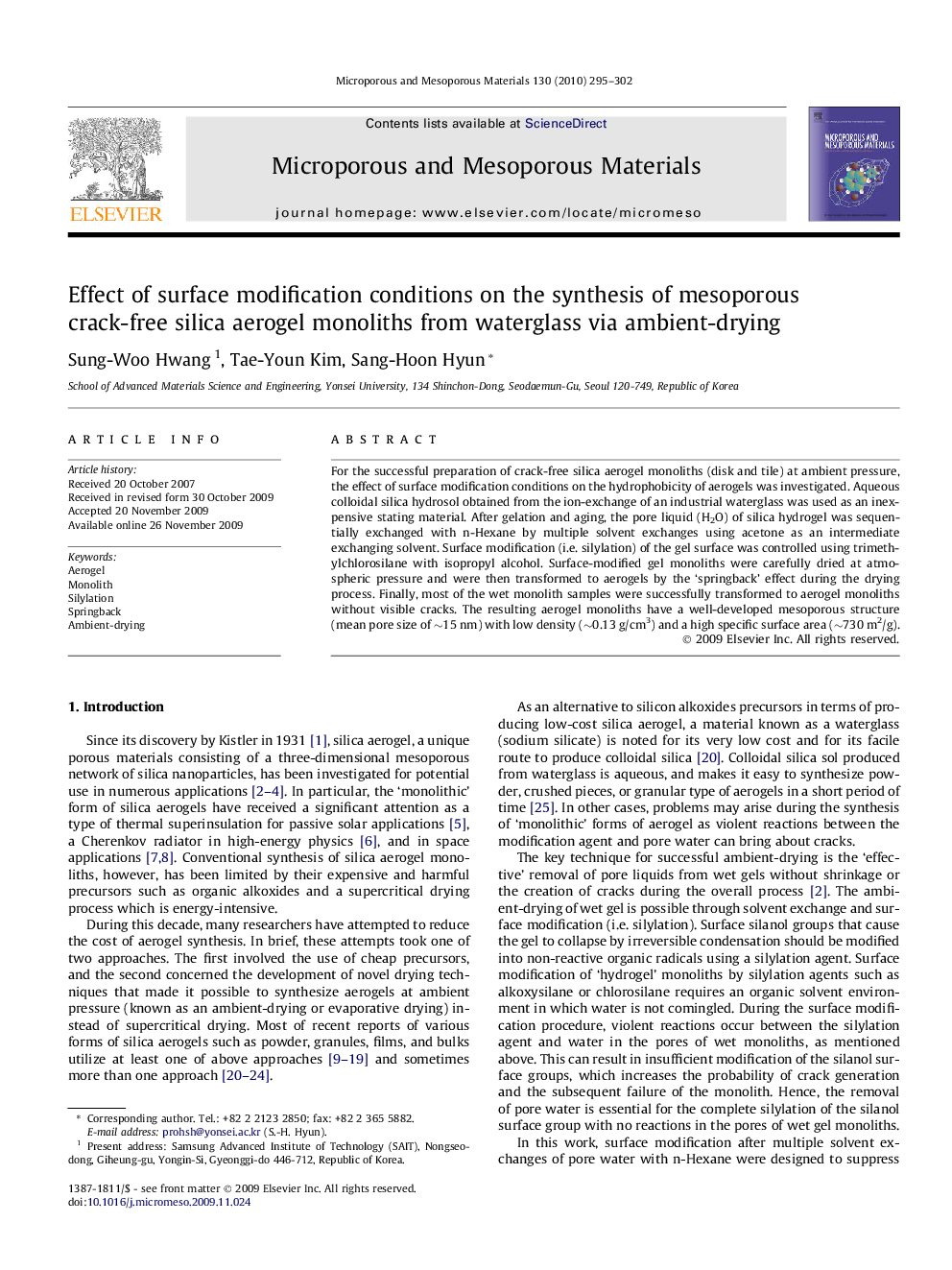| Article ID | Journal | Published Year | Pages | File Type |
|---|---|---|---|---|
| 75489 | Microporous and Mesoporous Materials | 2010 | 8 Pages |
For the successful preparation of crack-free silica aerogel monoliths (disk and tile) at ambient pressure, the effect of surface modification conditions on the hydrophobicity of aerogels was investigated. Aqueous colloidal silica hydrosol obtained from the ion-exchange of an industrial waterglass was used as an inexpensive stating material. After gelation and aging, the pore liquid (H2O) of silica hydrogel was sequentially exchanged with n-Hexane by multiple solvent exchanges using acetone as an intermediate exchanging solvent. Surface modification (i.e. silylation) of the gel surface was controlled using trimethylchlorosilane with isopropyl alcohol. Surface-modified gel monoliths were carefully dried at atmospheric pressure and were then transformed to aerogels by the ‘springback’ effect during the drying process. Finally, most of the wet monolith samples were successfully transformed to aerogel monoliths without visible cracks. The resulting aerogel monoliths have a well-developed mesoporous structure (mean pore size of ∼15 nm) with low density (∼0.13 g/cm3) and a high specific surface area (∼730 m2/g).
